Writing and photography by NEFF Stewardship Associate Beth Gula
Spring field season has arrived for the stewardship department at New England Forestry Foundation (NEFF)! Our small team is still working remotely, but we’ve stayed busy in the woods over the last few months. For conservation easement (CE) monitoring, early spring offers an ideal window of time to conduct annual property visits or document the condition of new CEs because snow has melted but foliage hasn’t yet emerged. This allows us to see far and wide through the still-dormant forest, as well as observe ground conditions that leaves will soon obscure.
This is a particularly valuable time to search for property boundary evidence. On many older CEs, surveying, marking, or thoroughly documenting property corners and lines was not a standard practice like it is today. Property corners and lines are often detailed in written deed descriptions or mapped on survey plans, and over the last few years we’ve undertaken an effort to research documented boundary evidence and then locate these indicators in the field. Knowing the exact line where land to one side is protected and land on the other side is not allows us to better steward the CEs, protect conservation values, and ensure the terms of the CE are being upheld, including allowed or prohibited activities. We can also prevent or identify potential issues or encroachments earlier (encroachments are activities on a neighboring property that expand or extend onto the conserved land).
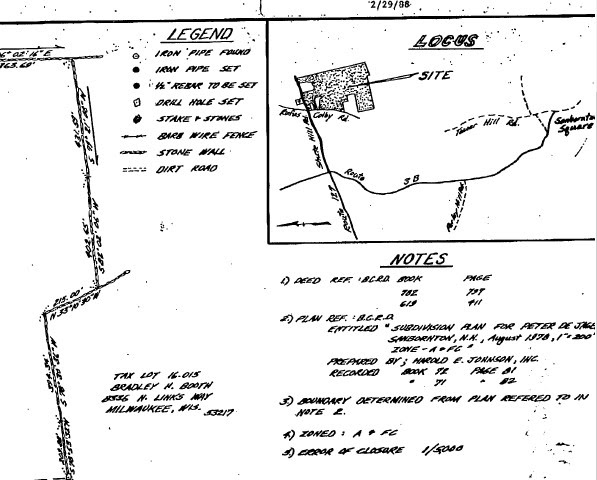
Survey plan details from a NEFF easement
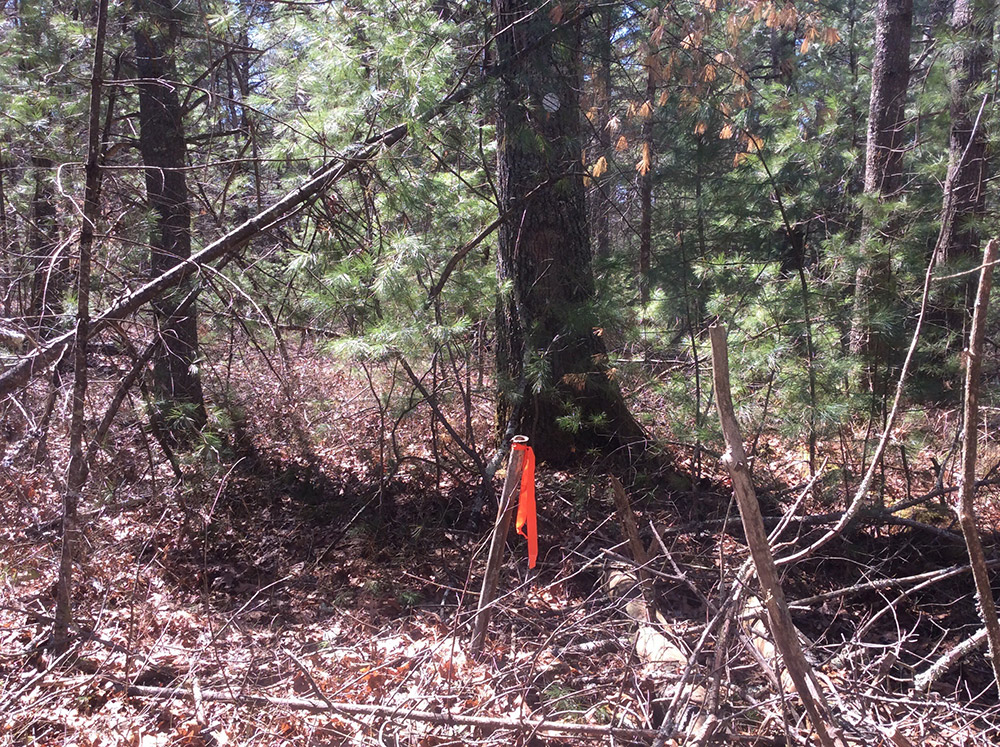
Old iron pipe
Corners, or points where a boundary line changes direction, are often marked with items called monuments. Monuments include historical evidence that may or may not be been lost to time, like a “stake and stones,” “at a gate post,” or a “nail in a tree.” Old metal fence posts or pipes set in the ground are more durable, making it more likely we’ll find them in our searches. Modern monuments include rebar stakes with plastic labeled caps, concrete or granite posts called “bounds,” or flat metal discs, like you might see on mountain summits, set on pipes or rocks with magnets to allow recovery with a metal detector. Boundary lines, especially on long-time woodlots like many NEFF easements, are often marked by ax or painted blazes. Faint traces of decades-old paint are sometimes all we need to confirm the location of a line.
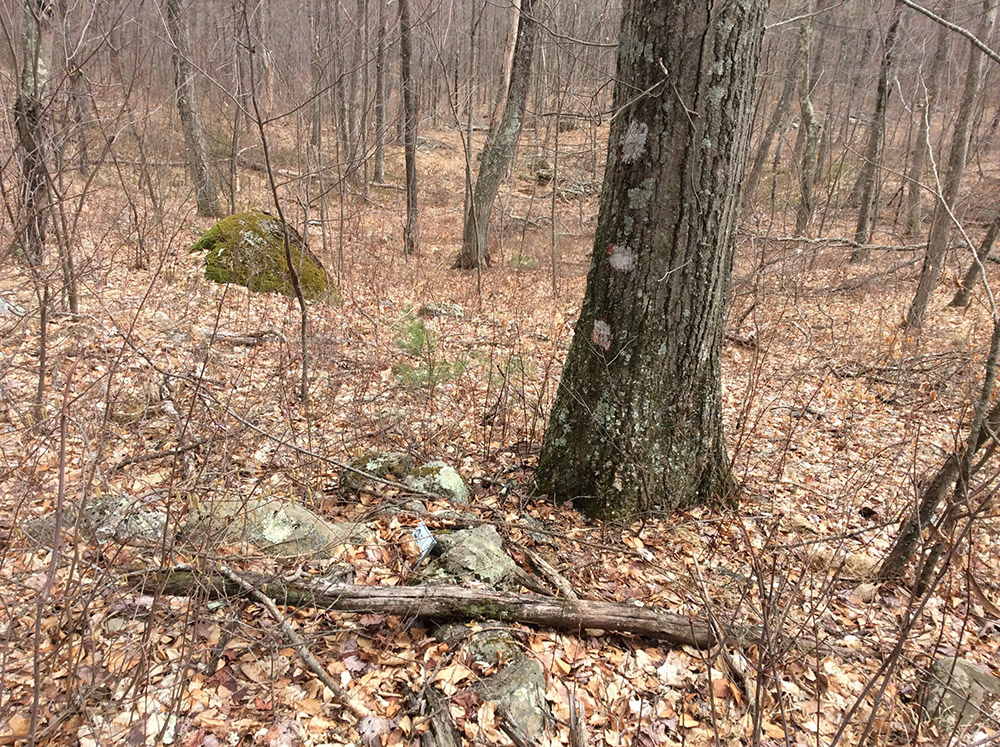
Triple white paint blazes marking a corner

Concrete bound with metal disk and blazing
Barbed wire was also common along boundaries. In many places, the metal wire has been removed, but remnant wire serves as a useful boundary indicator—as well as a notable hazard we make sure to keep a careful eye out for!
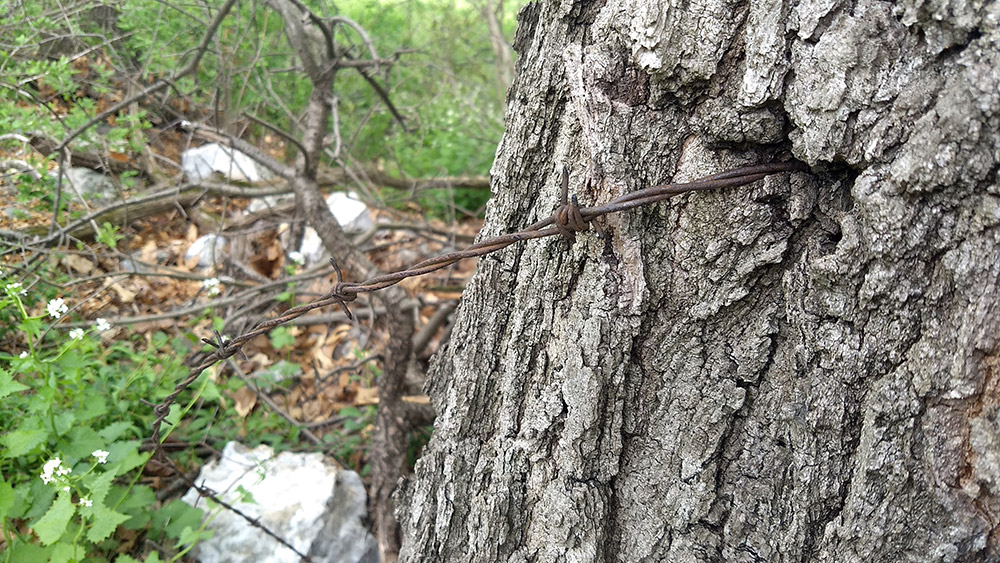

I’ve always loved this part of our job because it feels like a treasure hunt. Reading a survey plan and following compass bearings to look for a particular “upright stone” or hidden metal marker in the middle of the woods can be exacting, challenging, and often futile. But sometimes we find the treasure! After finding the “X” on the map we were searching for, we set to work recording GPS waypoints and taking photographs, recording the condition of the marker and property for posterity. Once we’re back in “the office,” we use the GPS data to adjust our digital maps as part of our ongoing quest to improve our understanding of the CE (or NEFF’s Community Forest) boundaries. Then, we move on to the next property and dig into all the mysteries it may have to offer.
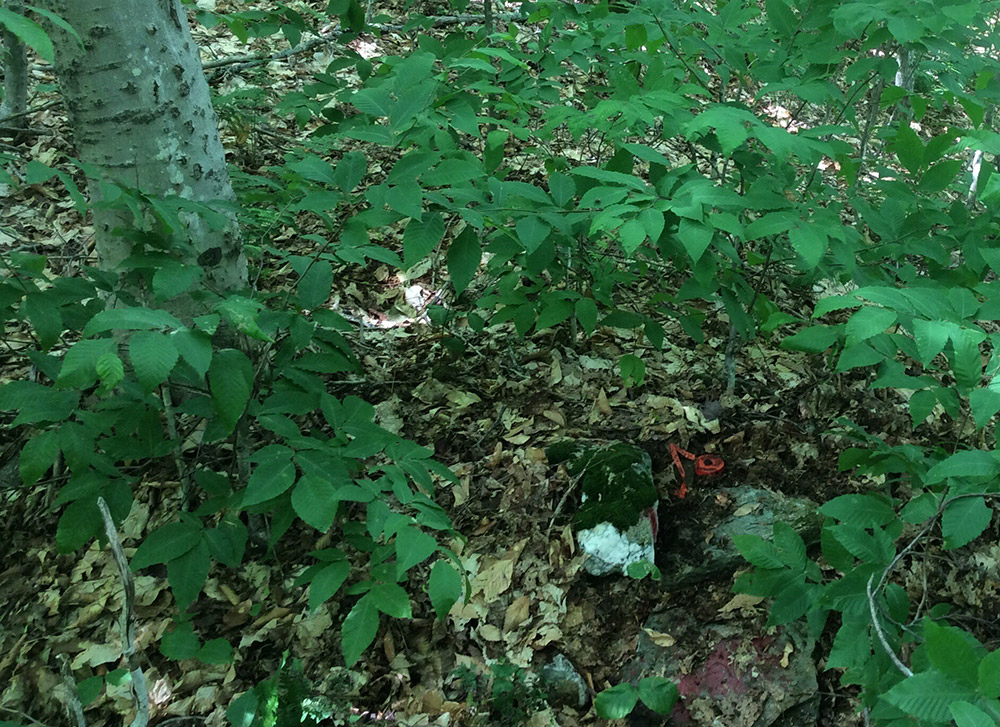
Summer foliage makes it hard to see this rebar and plastic disk corner monument
Read More
Notes From The Field: Rocky Pond Community Forest | April 17, 2020
Notes From The Field: Early Signs Of Spring | April 28, 2020
Notes From the Field: What’s Making Me Happy | May 8, 2020
Notes From the Field: Resources for Wildlife on the Go | May 26, 2020
Notes From the Field: Problem Plants’ Spring Awakening | June 5, 2020
Notes From the Field: Race and the Outdoors, Through the Lens of Birding | July 10, 2020
Notes From the Field: Wildlife Signs and More While on Walkabout | August 6, 2020
Notes From the Field: Thinking Through Conservation’s Untold Origins While Driving to Conservation Sites | August 27, 2020
Notes From the Field: A Rare Turtle Sighting | September 25, 2020
Notes From the Field: Digital Field Tools for Work and Home | October 10, 2020
Notes From the Field: Winter Woodpeckers | November 19, 2020
Notes From the Field: Remote Monitoring and Satellite Imagery | February 18, 2021
